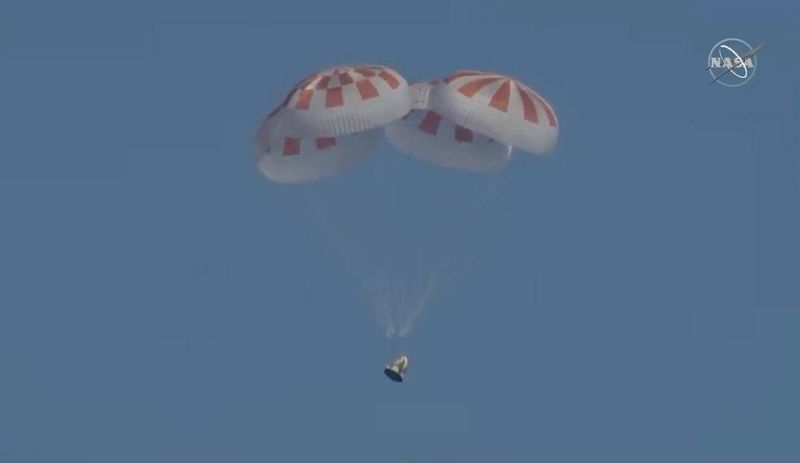
After a six-day mission in orbit, SpaceX's Dragon capsule returned to Earth on Friday morning and splashed down in the Atlantic Ocean. The landing, at 8:45am ET, came right on schedule, as did pretty much every milestone during the Crew Dragon's first mission, a test before humans fly aboard the vehicle.
Shortly after the landing, SpaceX President Gwynne Shotwell could be seen on NASA's webcast, walking around her company's mission control at its headquarters in Hawthorne, California. Shotwell spent a few minutes shaking the hands of each controller and offering a few hugs. Certainly, this triumphant moment capped an emotional week for a company that has worked for the better part of a decade to develop a crewed spacecraft.
At first blush, the performance of Dragon appears to have met or exceeded NASA's hopes for this flight to the International Space Station, including during the critical descent back to Earth Friday morning. "The vehicle really did better than we expected," Steve Stich, deputy Commercial Crew program manager for NASA, said shortly after the landing.
Over the last six days, among other milestones, SpaceX had to demonstrate the safe fueling of the Falcon 9 rocket, its launch, Dragon's separation and power performance in orbit, autonomous docking to the space station, undocking, a de-orbit burn, a controlled descent through Earth's atmosphere, and finally the deployment of four main parachutes on the way to a soft touchdown.
Diving into data
NASA will now spend the next few weeks reviewing data to ensure that its initial impression is correct, first by poring over data from the launch and then sensor data from the on-board mannequin, Ripley, as well as data from the vehicle itself during its orbital phase and re-entry.
After the toasty-looking Dragon was taken on board the Go Searcher recovery vessel about an hour after landing Friday morning, it will take another 30 hours for Dragon to return to port. Once there, the capsule will undergo processing at Kennedy Space Center for another important test, an in-flight abort mission to ensure that the spacecraft can quickly push itself away from the rocket in case of an emergency. Stich said that flight should take place in the June time-frame using the same capsule that just splashed down.
Much work, of course, remains to be done to get astronauts Doug Hurley and Bob Behnken on board Dragon for their mission to the station. The parachute system that flew on this test flight was not entirely the same as the one that will be used for the crew flight, and neither were avionics and life support entirely finalized. But this test flight's success, along with its data, should allow SpaceX and NASA to close out those systems in the coming months.
"I don’t think we saw anything in the mission so far that would preclude us from having a crewed mission later this year," Stich said Friday. "This flight really sets us up well for the rest of the year."
reader comments
314